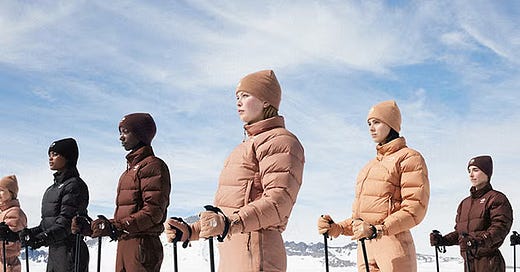Winners and Losers: SKIMS x The North Face
I have thoughts! Plus a deep dive on Merino wool and more...
What’s it called when everyone is thinking about the same thing at the same time? A mind meld? Synchronicity? Basic? Anyway, I had a long post about base layers queued up and then Kim Kardashian had to go and drop her SKIMS x The North Face collaboration in the middle of the week. I got quite a few texts about it. Kim Kardashian, love her or hate her, …
Keep reading with a 7-day free trial
Subscribe to The Sweat Lookbook to keep reading this post and get 7 days of free access to the full post archives.


